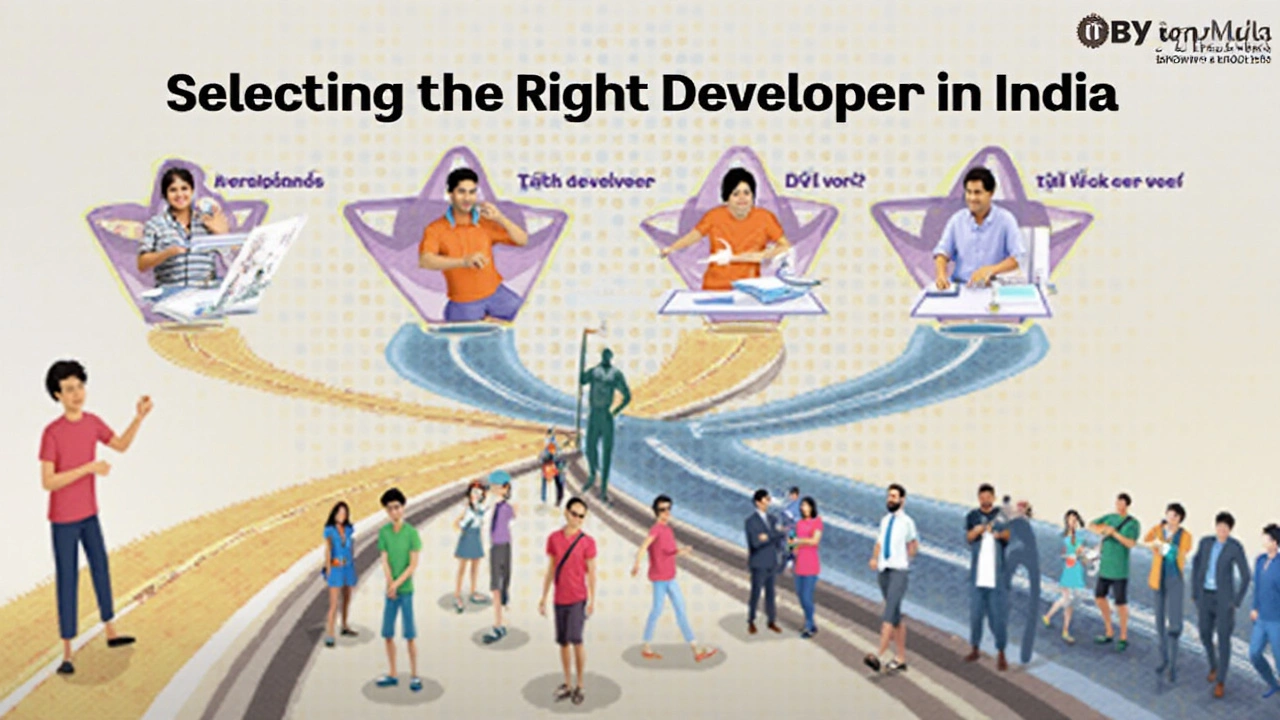When you're thinking about setting up a website, particularly using WordPress in India, you're likely curious about how much it will cost. Truth be told, pricing can significantly differ based on what you're looking to achieve with your site. Some businesses need a simple, clean online presence, while others might require a complex e-commerce solution or a highly customized blog.
The key thing to understand is that various factors come into play when developers set their prices. These include the project's complexity, the timeframe, and the specific features you might want to incorporate. Finding a balance between quality and cost-efficiency is crucial.
- Factors Influencing Cost
- Pricing Models and Packages
- Tips for Choosing a Developer
- Negotiation and Cost Management
Factors Influencing Cost
When it comes to determining how much developers charge for creating a website, several critical factors come into play. Firstly, the complexity of the site is a major consideration. If you're Eyeing a simple blog or portfolio site, expect lower expenses compared to intricate e-commerce or database-driven platforms where custom functionalities are a necessity. The more intricate the features, the more time and resources the web development process demands, hiking up the costs.
Another considerable factor is the level of expertise of the developer or development team. In India, the experience spectrum can vary immensely, ranging from independent freelancers working out of small towns to seasoned professionals based in metropolitan IT hubs. Skilled developers with a strong portfolio of high-quality projects tend to charge more for their services as they bring invaluable insights to the table. Contrariwise, hiring an entry-level developer might be lighter on the wallet but could lead to compromises in quality and efficiency.
Geographical location within India can also impact costs. Developers in cities like Bangalore, Mumbai, or Delhi often have higher rates due to the increased cost of living and demand. Moreover, communication also plays a vital role. Developers who can articulate their ideas and demonstrate a clear understanding of your project tend to cost more. According to a survey by the tech community, firms that excel in client-developer communication can increase their project success rate significantly, leading to higher overall satisfaction.
A survey published by TechGig noted, "Establishing clear communication boosts project success rates by 33%."
Design customization is another critical cost-influencing aspect. Tailoring a site's appearance to reflect a unique brand identity requires more labor and skill than using a pre-designed template. This includes adjusting layouts, color schemes, typography, and integrating bespoke graphics. Additionally, the need for post-launch services like maintenance, SEO, and updates should not be overlooked as they can add to the continuing expenditure of managing a website. Constructing a site isn't just about the initial build; it also requires sustained attention to keep it fresh, secure, and efficient.
Usage of certain technologies and trends such as responsive design or compatibility with AI features may further push costs. Moreover, any tight deadlines can inflate the price, as developers might need to prioritize your project over others or work extra hours. Understanding these influences can help in making a balanced, informed decision when commissioning a website in India. By being aware of these factors, businesses can better manage their expectations and budget in achieving a successful web presence.

Pricing Models and Packages
Creating a WordPress website in India involves choosing from several different pricing structures, each tailored to meet varying needs and budgets. The most common model is the **flat-rate package**, where developers set a single price for the entire project scope. This is often ideal for businesses or individuals who have a clear vision of what they want, as it prevents unexpected surprises in terms of expenditure. Flat rates generally cover essential features such as domain registration, basic site design, and initial setup, making it a straightforward choice for many.
Besides flat-rate, there's the **hourly pricing model**, where developers charge a specific fee per hour spent on the project. This model is particularly suitable for projects where requirements may evolve over time, or where the project's scope isn't fully defined from the outset. The flexibility of hourly rates allows clients to make adjustments without locking into a comprehensive package. On average, experienced Indian developers charge between $20 to $80 per hour, depending on their expertise and the project's complexity.
Some agencies offer **monthly retainer packages**, which are a mix of both package and hourly models. This approach typically involves ongoing website updates, maintenance, and SEO services billed monthly. While it might seem like a recurring expense, monthly retainers ensure the website remains current with the latest trends and security measures, providing peace of mind to business owners.
The choice between these models should consider not just the immediate financial impact but also the long-term objectives. "Choosing the right pricing model is crucial," says a representative from a leading web development agency in India.
"It's not just about the initial cost but about aligning with a partner who understands the evolving nature of your business and can adapt the digital strategy accordingly."
Comparing these pricing strategies, it's clear that there’s no one-size-fits-all answer. For those looking to balance cost and quality, evaluating several developers and requesting detailed proposals can offer insight into who offers the most value for the investment. Remember that higher charges often correlate with increased experience and a broader skill set, which can significantly affect the final product.
To better understand these models, here's a simple breakdown of typical costs associated with website creation in India:
| Package Type | Average Cost Range (USD) |
|---|---|
| Flat Rate | 500 - 2,500 |
| Hourly Rate | 20 - 80 per hour |
| Monthly Retainer | 100 - 300 per month |
Choosing the right pricing model will heavily depend on the specific needs and flexibility of your project. It’s wise to collaborate closely with potential developers, understand their offerings, and align them with your budget and goals. A transparent conversation at the start can lead to a successful partnership and a beautifully crafted WordPress website with great features and functionality.

Tips for Choosing a Developer
Choosing the right developer for your WordPress website can be a pivotal step in the entire process. It essentially determines the quality and functionality of the final product, as well as how smoothly the development stage goes. One of the primary tips I often share is to clearly understand your own needs first. Before you start reaching out to developers, make sure you have a clear idea of what features you require, what functionalities are crucial for your site, and even the kind of design style you prefer. This clarity will allow you to convey your expectations accurately and find a developer whose skills align well with your specific project.
Research plays a critical role in finding a competent developer. Look for their portfolio and past work. A developer with a diverse display of prior projects can often handle various challenges, showing their adaptability and creativity in fulfilling different client requirements. When you go through their work, ask yourself if any of their past projects align with your vision. This will give you confidence in their ability to replicate success in your project too. Experience also matters greatly, as seasoned developers are more likely to troubleshoot effectively, sticking to the best practices they're familiar with.
Communication Skills Matter
Communication with your developer cannot be overstated. You need someone who understands your vision and can translate it into a web platform effectively. Look for those who are responsive, prompt, and transparent about what they can deliver. During initial discussions, pay attention to whether they ask the right questions to clarify your needs. Developers who engage in conversations and provide insightful suggestions are often ones who take initiative and have a vested interest in your website's success.
Do not shy away from discussing budget constraints and cost expectations during these conversations. Being upfront about costs helps avoid misunderstandings later. Many developers in India offer various pricing models, including fixed price or hourly rates. Ask for a detailed breakdown of costs, including any potential additional charges for changes in requirements during the development process.
Seek Recommendations and Reviews
When you're investing in a developer's expertise, it's wise to lean on recommendations and reviews from past clients. Often, people are eager to share their experiences, which can provide you with honest insights into a developer's capabilities and work ethic. Try to get in touch with their previous clients and ask about how their projects unfolded. This firsthand account can be invaluable!
There's an ever-changing landscape in web development, with emerging technologies and trends shaping how websites are built. A reputable source once shared,
"A great developer is not just about technical skills; it's about understanding the client's problems and providing long-term solutions."
By taking these tips into account, you can increase your chances of finding a developer who will not only meet but exceed your website development needs in India.

Negotiation and Cost Management
Understanding the intricacies of negotiating a fair price for developing a WordPress website in India is essential for ensuring you get value for your money. When you begin discussions with a developer, it's important to have a clear idea of your budget and the scope of your project. Start by assessing what you really need in a website. Is it a simple blog, an informational site, or something more dynamic like an e-commerce platform? The depth and breadth of your project requirements will influence the development cost significantly.
One interesting fact about the Indian market is the wide range of pricing strategies employed by developers. You'll encounter some who charge on an hourly basis, while others might offer package deals which could be more economical for larger projects. According to a survey conducted in 2023, the average hourly rate for web developers in India ranges from $10 to $50, a fraction of what you'd pay in the western markets. This range highlights the importance of understanding what each developer brings to the table in terms of experience and skillset.
Negotiation isn't just about lowering the price; it's also about ensuring both parties are clear about deliverables and timelines. A well-drafted contract specifying all terms, including revisions, payment schedules, and milestones, can prevent misunderstandings. An effective strategy could be to request a phased payment approach, where payments are made at different stages of the project. This not only helps in managing your cash flow but also incentivizes the developer to maintain consistent quality.
"The art of negotiation is finding a middle ground where both parties feel like they've gained something valuable," suggests negotiation expert Deepak Malhotra in his book on negotiation strategies.
To effectively manage costs, it's vital to keep a close eye on any additional features that might creep in during development. These 'scope creeps' can often lead to escalated costs. Regularly reviewing project progress with your developer helps in catching these potential deviations early. Moreover, having an open line of communication with your developer can lead to innovative cost-saving ideas that you might not have considered initially.
Finally, if you're strapped for cash, consider exploring platforms like Upwork or Freelancer where you can find developers offering competitive rates. However, quality should never be compromised for cost. Balancing affordability with quality requires diligence and sometimes, as recent studies have highlighted, paying a bit more for a seasoned developer can save money in the long run by reducing the need for future fixes and adjustments. Always remember, a well-done website is an investment in your business's future.
